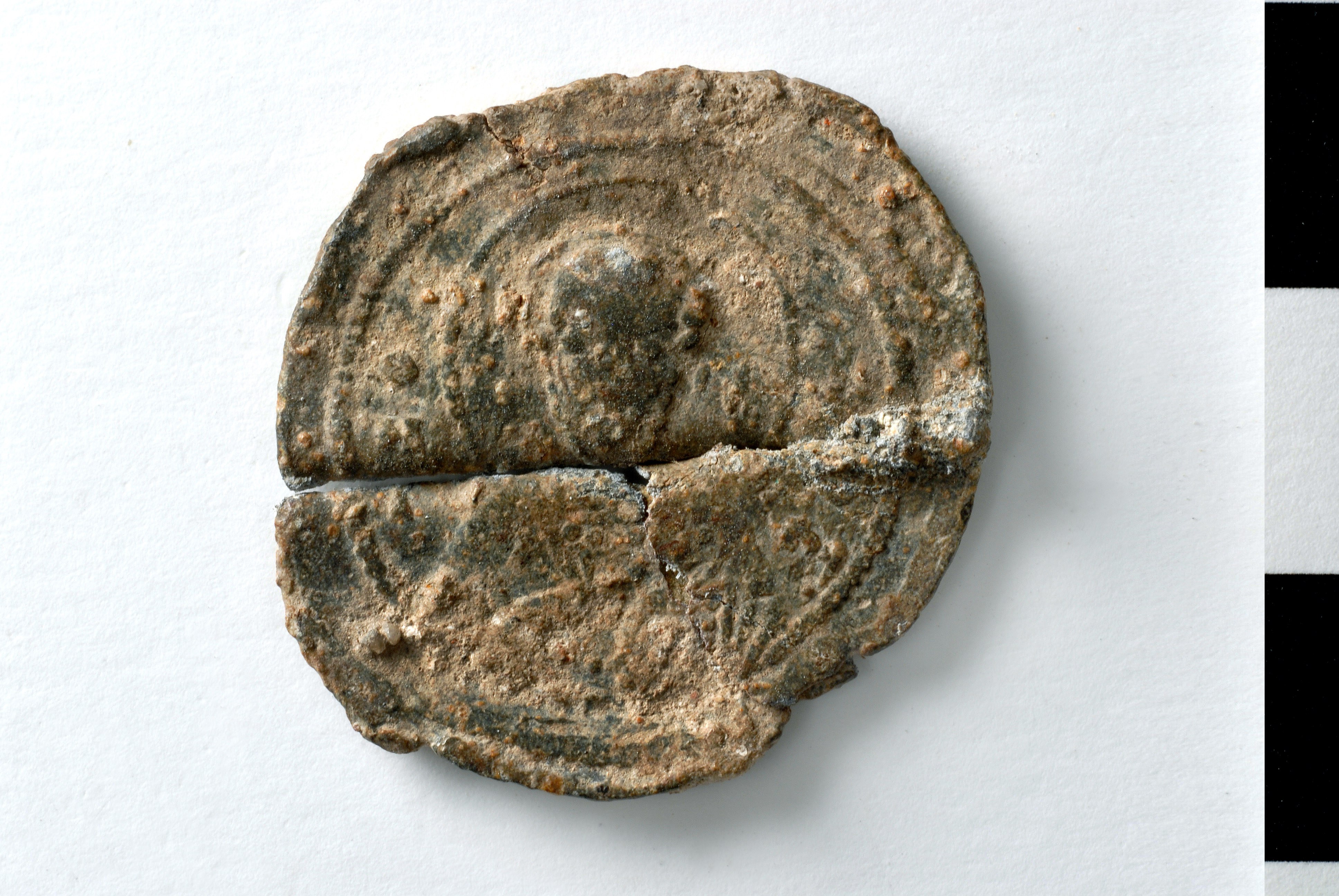(Nicholas?) ho tou barbarou, kourator of Cyprus (eleventh century)
Obverse
Bust of St. Nicholas. Inscription in two columns. Ο|Ν|ΙΚ|.|Λ..: Ὁ ἅγιος Νικόλαος. Border of dots.
Obverse
Bust of St. Nicholas. Inscription in two columns. Ο|Ν|ΙΚ|.|Λ..: Ὁ ἅγιος Νικόλαος. Border of dots.
Reverse
Inscription of five lines preceded by decoration. Border of dots.
ΣΦΡΑΓ,
ΚΡΑΤΟΡ,
ΚΥΠΡΟ
ΤΑΡ
ΑΡ,
Σφραγὶς κουράτορος Κύπρου ὁ τοῦ Βαρβάρου
| Accession number | BZS.1958.106.4730 |
|---|---|
| Diameter | 27.0 mm; field: 19.0 mm |
| Previous Editions | DO Seals 2, no. 38.11. |
Translation
Σφραγὶς κουράτορος Κύπρου ὁ τοῦ Βαρβάρου.
Seal of the kourator of Cyprus ho tou barbarou.
Bibliography
- Catalogue of the Byzantine Seals at Dumbarton Oaks and at the Fogg Museum of Art, Vol. 2: South of the Balkans, the Islands, South of Asia Minor (Open in Zotero)
- Michaelis Pselli Philosophica minora (Open in Zotero)
- Les îles de l’empire byzantin: VIIIe-XIIe siècles (Open in Zotero)
- Les listes de préséance byzantines des IXe et Xe siècles (Open in Zotero)
- Byzantine Lead Seals, Vol. 2 (Open in Zotero)
- Byzantium and Islam in Cyprus in the Early Middle Ages (Open in Zotero)
- The Nature of the Arab-Byzantine Relations in Cyprus from the Middle of the 7th to the Middle of the 10th Century A.D. (Open in Zotero)
- The Church of Cyprus during the Period of the Arab Wars, 649-965 (Open in Zotero)
- Le Corpus des sceaux de l’empire byzantin (Open in Zotero)
- Le Synodikon de l’orthodoxie: Édition et commentaire (Open in Zotero)
- Ἡ Κύπρος καὶ οἱ Ἄραβες (Open in Zotero)
- Σημειώσεις Ἀναφερόμεναι Εἰς Τῆν Ἱστορίαν Τῆς Βυζαντινῆς Κύπρου (Open in Zotero)
- Die byzantinische Armee im 10. und 11. Jahrhundert: Studien zur Organisation der Tagmata (Open in Zotero)

Commentary
The choice of St. Nicholas for the decoration of the obverse may be an indication of the owner's Christian name. A certain Constantine primikerios ὁ ἀπὸ βαρβάρων is mentioned in the Life of St. Basil the Younger (ActaSS March III, 24*). The legend of our seal is prosodic, in spite of its thirteen syllables.
The office of kourator of Cyprus is also known from another seal (BZS.1958.106.4730) and from letters of Psellos addressed to such a kourator, congratulating him for having pacified the island (Psellos, Minora II, nos. 80, 159). Malamut (Iles, 320-21) deduced from these letters that the kourator was a governor of the island, appointed in order to pacify it after the revolt of the Cypriots in 1042. But the date of these letters is not known, and our seals show that the kouratoreia was a semipermanent institution, since we know of at least two kouratores. Thus we would tend to consider that, according to a well-established tradition, the kourator was at the head of a domain of the crown (kouratoreia) possibly assembled from the lands abandoned by the Arabs immediately after the capture of the island by the Byzantines in 965, much in the same way as Melitene had become a kouratoreia after its capture in 934 (Listes, 356).